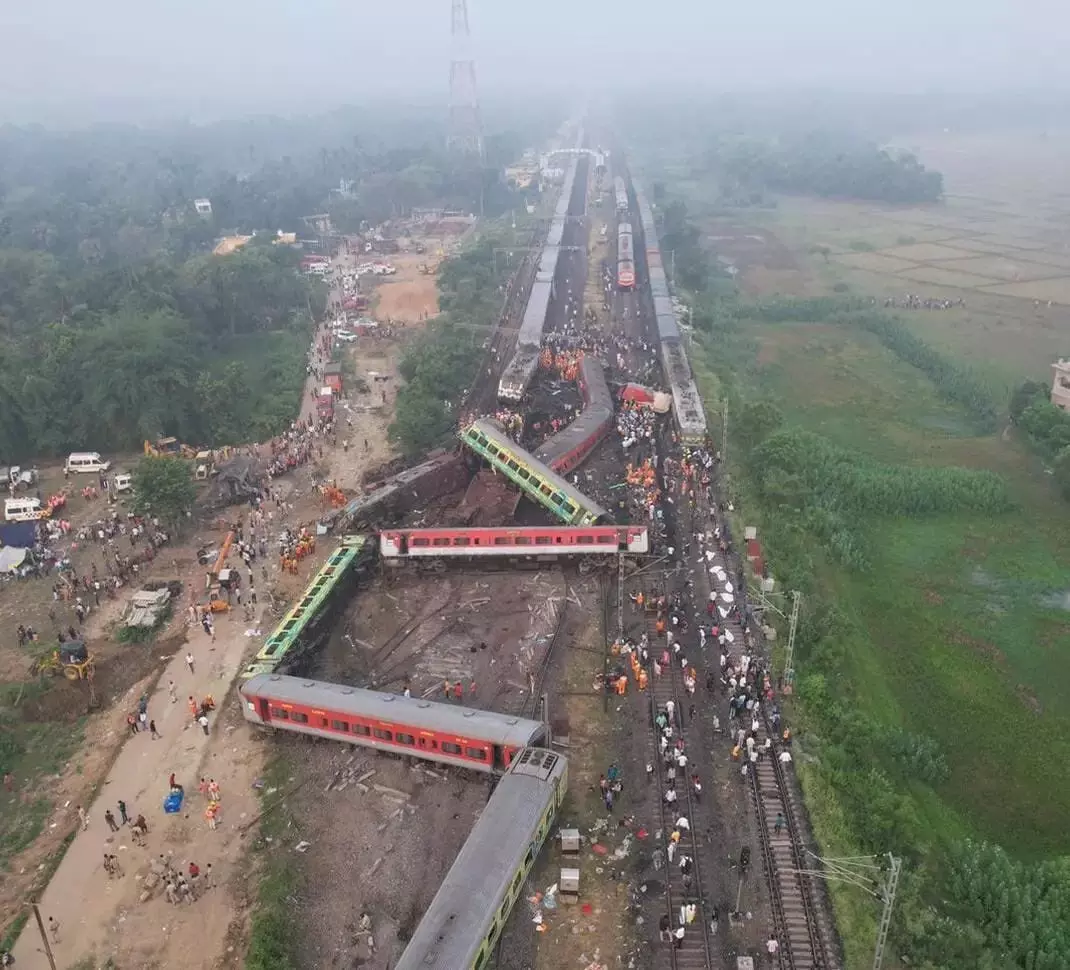Odisha Train Crash: 'Kavach' safety system absent on accident route, says Railways
Kavach alerts when a loco pilot jumps a signal (Signal Passed at Danger -- SPAD), which is the leading cause of train collisions
By Sri Lakshmi Muttevi
New Delhi: The railways has initiated a high-level probe into the train crash in Odisha, which will be headed by the commissioner of railway safety, South Eastern Circle, officials said on Saturday.
The commissioner of railway safety works under the Ministry of Civil Aviation and investigates all such accidents.
"A M Chowdhary, CRS, SE Circle, will inquire into the accident," a spokesperson of the Indian Railways said. The national transporter has also said anti-train collision system "Kavach" was not available on the route.
At least 238 people have been killed and more than 900 injured in the crash on Friday involving the Bengaluru-Howrah Superfast Express, the Shalimar-Chennai Central Coromandel Express and a goods train.
While it is not clear what caused the crash, sources indicated a possible signalling failure.
"The rescue operation has been completed. Now, we are starting the restoration work. Kavach was not available on this route," Indian Railways Spokesperson Amitabh Sharma said.
The railways is in the process of installing "Kavach", an anti-train collision system, across its network.
Railway officials said, as of now, more than 100 people have claimed ex-gratia payments. A total of 48 trains cancelled, 39 diverted and 10 short-terminated.
What is Kavach?
Indian Railways has developed its own automatic train protection system called "Kavach" for enhancing safety of running trains. Kavach has been developed indigenously by the Research Design and Standards Organisation (RDSO) in association with three Indian vendors.
Kavach alerts when a loco pilot jumps a signal (Signal Passed at Danger -- SPAD), which is the leading cause of train collisions. The system can alert the loco pilot, take control of the brakes and bring the train to a halt automatically when it notices another train on the same line within a prescribed distance. It will also help in train running during inclement weather such as dense fog. Thus, Kavach will enhance safety and efficiency of train operations.
Salient features of Kavach
- Controls speed of a train by automatic application of brakes in case loco pilot fails to apply the brakes.
- Repeats line-side signal in cab which is very useful for higher speeds and foggy weather.
- Works on principle of continuous update of movement authority.
- Auto whistling at level-crossing gates.
- Collision avoidance by direct loco to loco communication.
- Supports feature of SOS in case of any mishap to control train in vicinity.
Trials of Kavach were conducted on the Lingampally-Vikarabad-Wadi and Vikarabad-Bidar sections of South Central Railway, covering a distance of 250 kilometres. Following successful trials, three vendors were approved for further developmental orders on the Indian Railways network.
The total expenditure incurred on the development of Kavach stands at Rs 16.88 crore. The roll-out of Kavach is planned on the New Delhi-Howrah and New Delhi-Mumbai sections, with a target completion date of March 2024. Further expansion will be based on the experience gained from the initial implementation, officials said.
In February, close on the heels of a head-on collision between two goods trains in Uttar Pradesh, the railways launched a month-long safety drive to prevent accidents such as derailment and overshooting of signals by loco pilots. Under the drive, senior officers from the Railway Board, zonal railways and divisions were instructed to visit various sections, lobbies of crews, maintenance centres, work sites etc. and carry out a "thorough review of the working practices" to check and enforce safe operational and maintenance practices prescribed to prevent accidents or unusual incidents.
Inputs from PTI